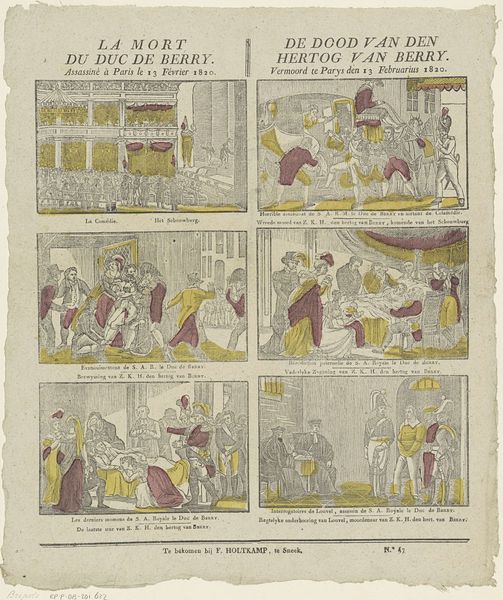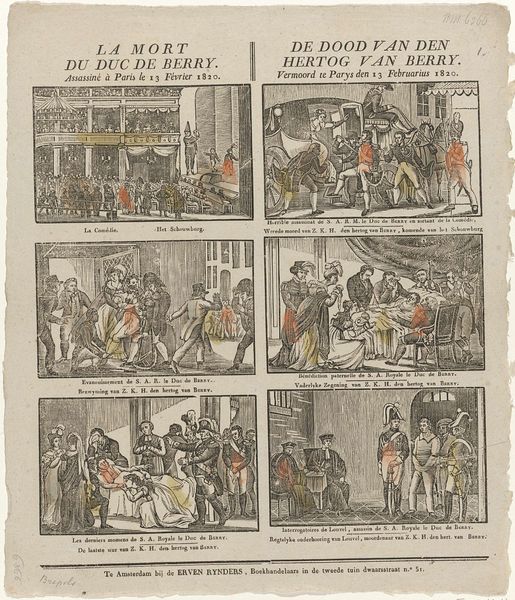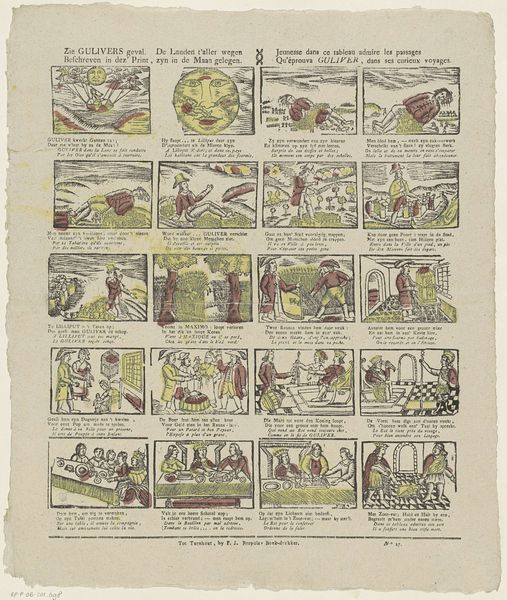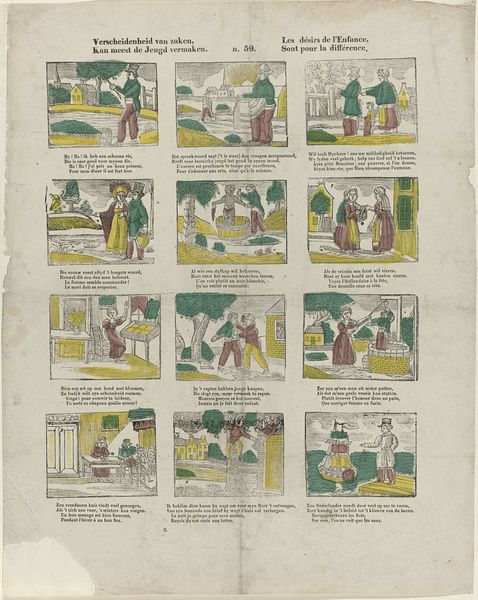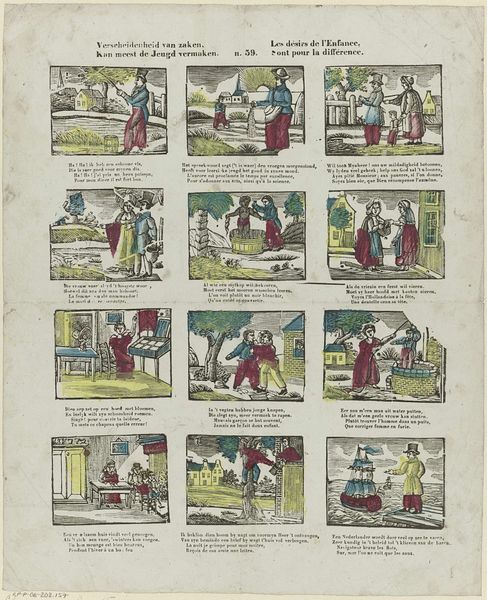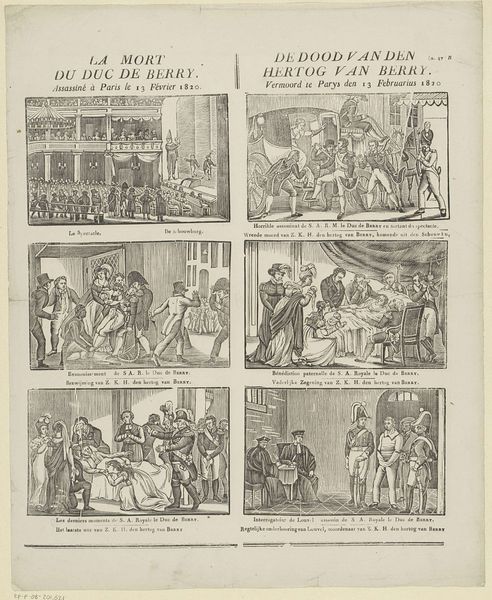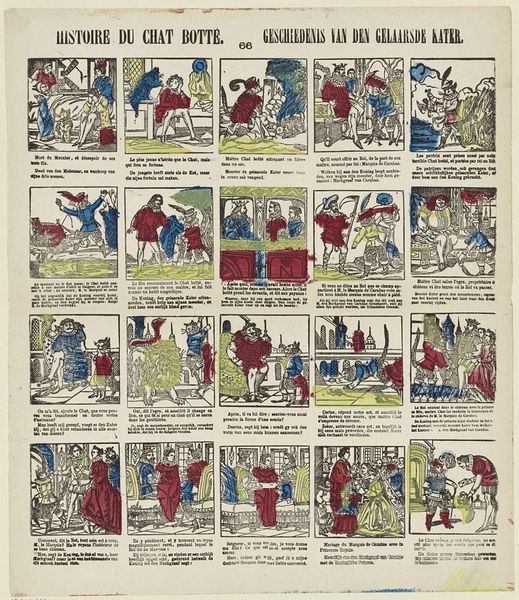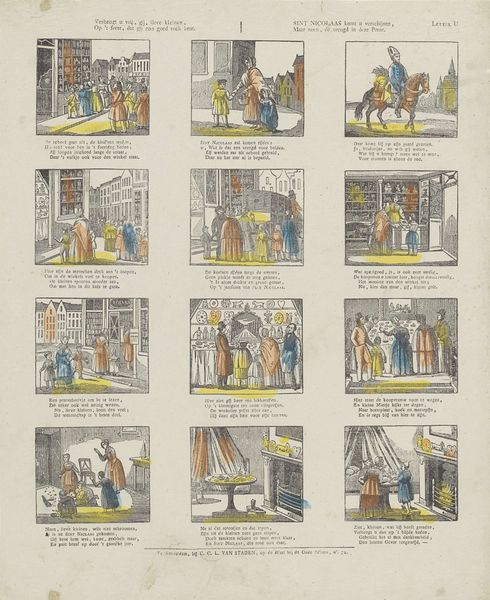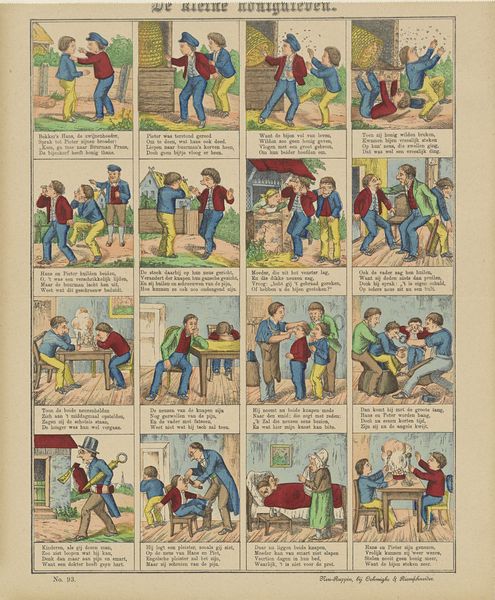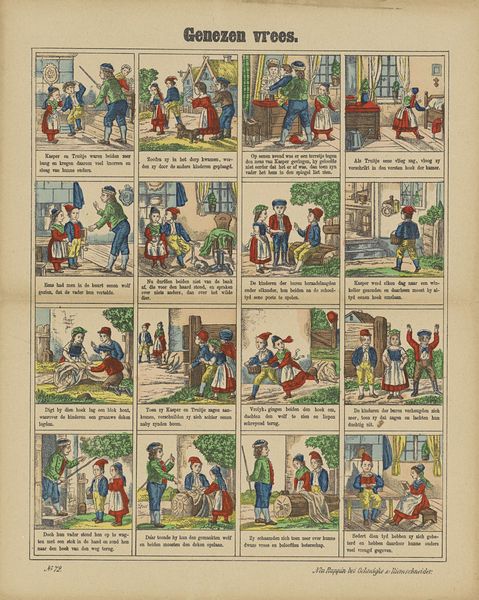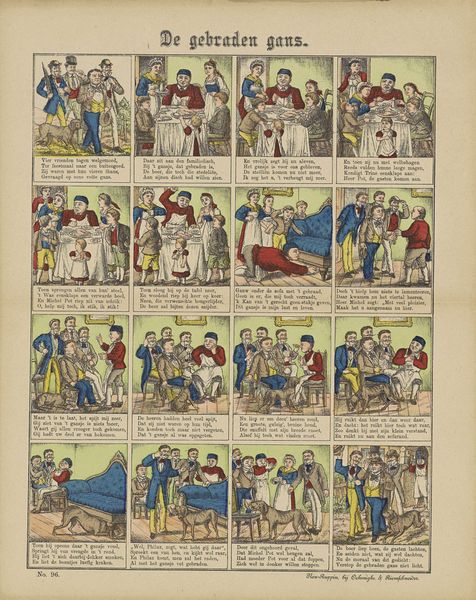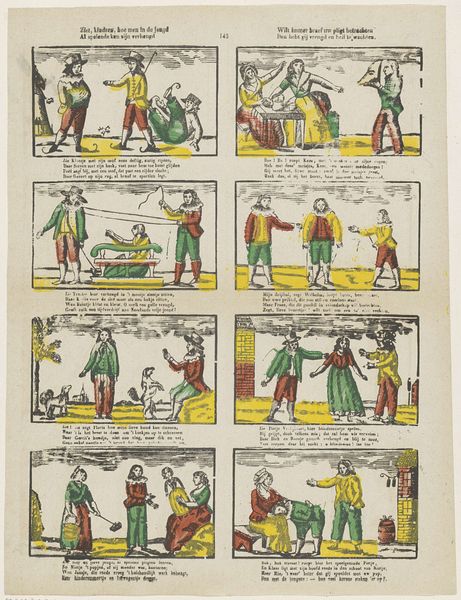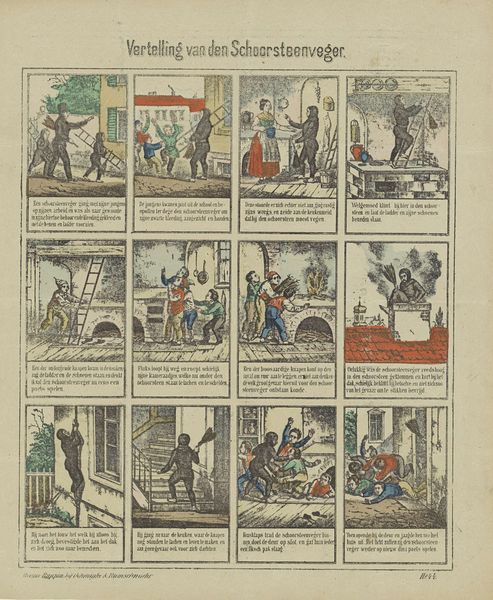
La mort / Du Duc de Berry. / Assassiné à Paris le 13 Février 1820 / De dood van den / Hertog van Berry. / Vermoord te Parys den 13 Februarius 1820 1800 - 1833
0:00
0:00
print, engraving
#
narrative-art
# print
#
ukiyo-e
#
romanticism
#
genre-painting
#
history-painting
#
engraving
Dimensions: height 400 mm, width 327 mm
Copyright: Rijks Museum: Open Domain
Curator: This print, created by Philippus Jacobus Brepols between 1800 and 1833, is titled "La mort / Du Duc de Berry.../ De dood van den / Hertog van Berry". It depicts the assassination of the Duke of Berry in six sequential scenes. Editor: It strikes me as both theatrical and intimate. The limited color palette and somewhat naive figuration create a poignant atmosphere despite the violent subject matter. Curator: Indeed. The composition relies on a grid-like structure. Six rectangular panels neatly compartmentalize different stages of the event, guiding the viewer’s eye sequentially through the narrative. Observe how the artist uses line and limited shading to define form within each vignette. Editor: I see so many layers of meaning. The top left shows the Opera house implying his attendance there became his end. And it reminds me that assassinations were not only political acts, but theatrical performances, staged for maximum impact. Curator: A compelling point! Brepols' choice of engraving facilitates dissemination and the reproduction of information through image and text. It serves as both a historical record and a piece of propaganda. Semiotically, notice the repeated visual motifs-- the fallen body, the concerned onlookers, these communicate the consequences of political violence. Editor: Also note the parallel texts; printing the narrative in both French and Dutch gives this print wider distribution, reaching beyond borders. These scenes have their roots in iconic imagery of mourning, yet with contemporary immediacy. It reflects society’s desire to witness this tragedy but also control and interpret the image as memory and warning. Curator: This work encourages us to reflect on the power of art to distill and convey complex political events, utilizing both structure and symbol to articulate meaning. Editor: Absolutely. It leaves me pondering the dual role images play-- as bearers of truth, and constructs of collective emotion, shaping our historical understanding.
Comments
No comments
Be the first to comment and join the conversation on the ultimate creative platform.
